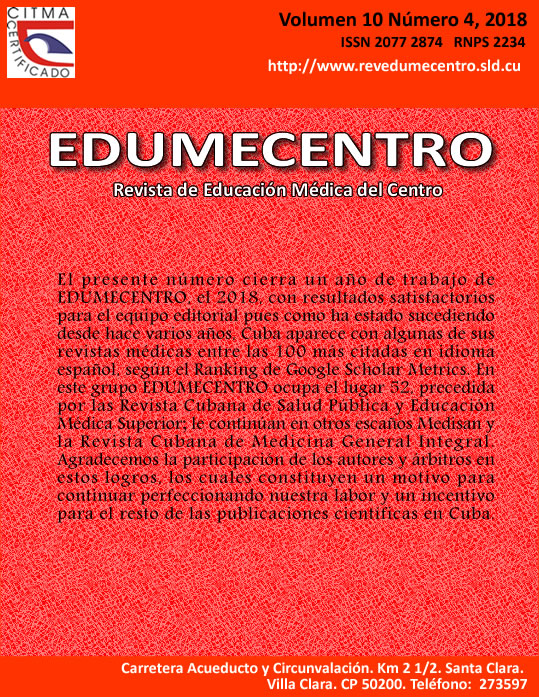Implementation of a virtual environment as a didactic tool to strengthen the teaching-learning process
Keywords:
virtual reality, information technologies and communication projects, students, education, medical.Abstract
Background: the development of information and communication technologies plays a fundamental role in the progress of new teaching-learning systems.
Objective: design a virtual environment as a didactic tool to strengthen the teaching-learning process using the Moodle platform.
Methods: a development research was carried out between September and December 2017 at the General Teaching Hospital "Guillermo Domínguez López". Theoretical methods were used: analysis-synthesis, historical-logical, induction-deduction and modeling; and empirical: observation and survey in the form of an interview. The methodology used for software development was RUP (Rational Unified Process).
Results: a tool was implemented that allows teachers to manage virtual courses as an online space to support face-to-face teaching. Its design provides ease of use and management, allows the administration of user profiles, the management of activities and resources of the courses created, and the administration of the site.
Conclusions: the virtual learning environment responds to the needs of the teaching-learning process of the entity. Their functions correspond to the design model and the functional requirements have an appropriate implementation.
Downloads
Published
How to Cite
Issue
Section
License
Los autores que publican en esta revista están de acuerdo con los siguientes términos:- Los autores/as conservarán sus derechos de autor y ceden a la revista el derecho de primera publicación de su obra, el cuál estará simultáneamente sujeto a una Licencia Creative Commons Reconocimiento-NoComercial-CompartirIgual 4.0 Internacional (CC BY-NC-SA 4.0) que permite a terceros compartir la obra siempre que se indique su autor y su primera publicación esta revista.
- Los autores pueden establecer por separado acuerdos adicionales para la distribución no exclusiva de la versión de la obra publicada en la revista (por ejemplo, situarlo en un repositorio institucional o publicarlo en un libro), con un reconocimiento de su publicación inicial en esta revista.
- Se permite y se anima a los autores a difundir sus trabajos electrónicamente (por ejemplo, en repositorios institucionales o en su propio sitio web) antes y durante el proceso de envío, ya que puede dar lugar a intercambios productivos, así como a una citación más temprana y mayor de los trabajos publicados (Véase The Effect of Open Access) (en inglés).










